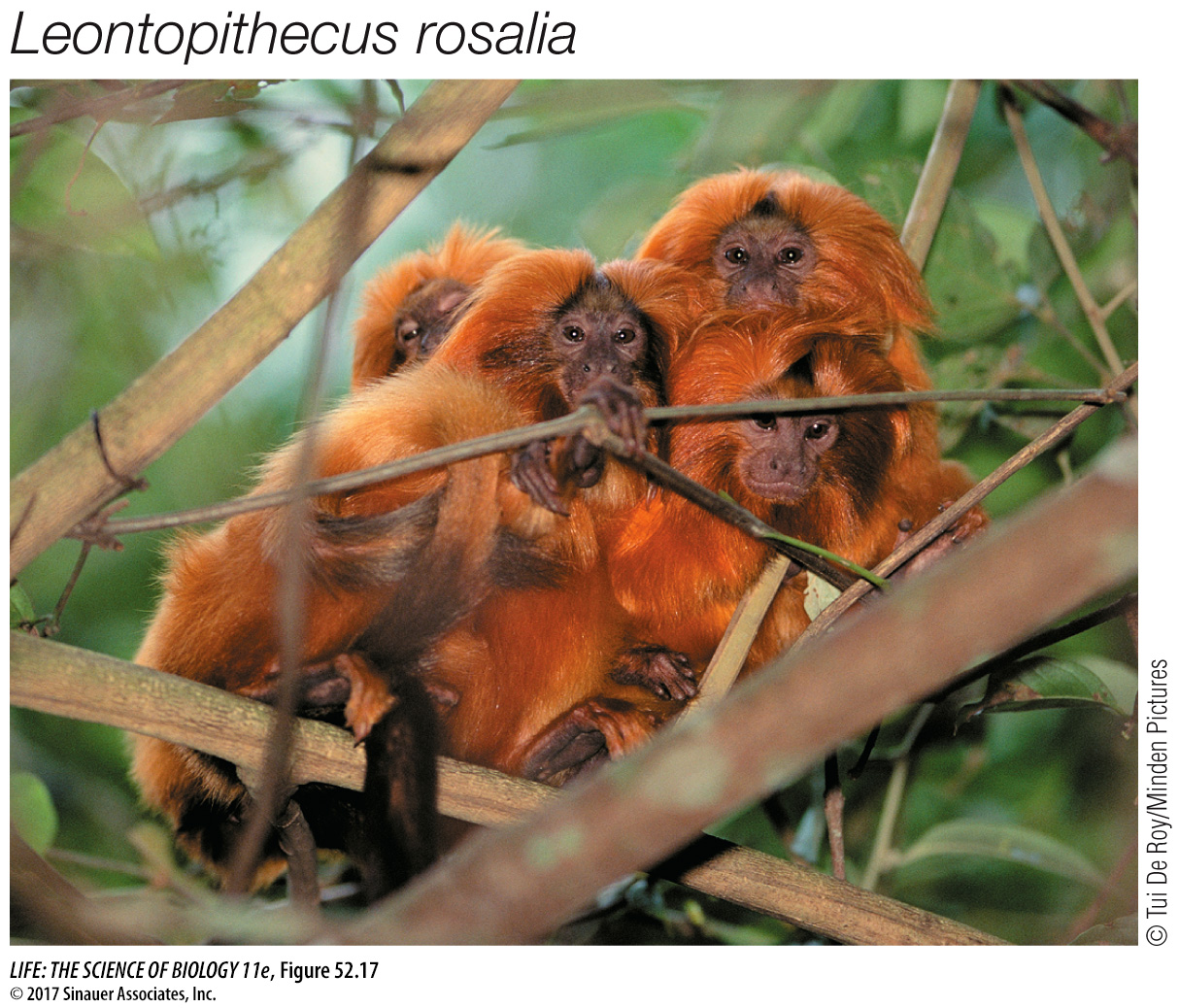Mating systems evolve to maximize fitness
We begin consideration of this enormous field of social behavior with mating behavior involving a single male and a single female. Because natural selection is always operating to maximize the reproductive success of both the male and the female of the species, an amazing array of mating systems has evolved.
MONOGAMY AND PROMISCUITY At the start of Chapter 7 you learned about the mating behavior of two species of voles. Prairie voles (Microtus ochrogaster) are monogamous, forming strong pair bonds that can last for life, and both parents participate in rearing the young. In contrast, montane voles (M. montanus) are promiscuous: males mate with many females, and the young are raised by the female alone. Behavioral physiologists have explained the proximate mechanisms behind these stark behavioral differences in terms of the release of neurohormones and the distribution of the receptors for those hormones in the brains of the two species. The ultimate question—
We begin with the premise that there is an asymmetry in the contributions of male and female animals to their offspring at the time of fertilization. Females produce a limited number of eggs, and each egg is generously stocked with resources. Males produce an almost infinite number of sperm, which contain next to no resources. So the energetic and opportunity costs of reproduction are greater for the female than for the male. In mammals this asymmetry increases throughout gestation as the female bears most of the costs. By the time of birth or hatching, the female’s investment in the young is much greater than the male’s investment, and the main way for the female to maximize her fitness is to make sure her young are healthy and survive to pass on her genes.
The male has different options for maximizing his fitness. He can simply move on after inseminating the female and seek additional mates as a means of maximizing his reproductive success—
POLYGYNY Mating systems in which a male has more than one mate generally involve a male that manages to sequester a group of females from other males. The polygynous male increases his fitness by increasing the number of females in his group. As you saw in Key Concept 52.4, male elephant seals accomplish this by protecting an area of beach where females give birth. Male baboons do so by herding females. Male red-
Why do females participate in these polygynous mating systems? Why doesn’t a female seek out a nice, kind, noncompetitive male? In some cases, such as the female elephant seal, she has no choice. If a female red-
*connect the concepts Charles Darwin recognized the phenomenon of sexual selection leading to the evolution of traits that could compromise the health and survival of the individual. See Key Concept 21.2.
POLYANDRY Mating systems in which one female mates with multiple males are relatively rare, but polyandry is seen in some birds and a few mammal species in which paternal care for the young can have a large effect on fitness. An example of a polyandrous species is the golden lion tamarin (Leontopithecus rosalia), a primate native to Brazil’s tropical rainforests (Figure 52.17). Tamarins are small—

What can a male tamarin do to help guarantee his reproductive success? Watching out for predators is one obvious contribution; gathering food for the female and her young is another. Like other primate parents, tamarins carry their young most of the time, but most other primates have single offspring. When tamarin mothers are carrying twins, they spend 92 percent of the time resting, compared with 58 percent of the time when they are not carrying young. Resting is not compatible with foraging and filling the mother’s high energy requirements. When a male is present, however, he carries the young about one-
If one male tamarin is helpful in protecting and raising young, then two should be even more helpful. Some females can attract a second mate by being sexually receptive to him. Neither male can be sure that any eventual offspring are his, so it is in the best interest of both to help in their rearing. Of the tamarin families observed in field studies, only 22 percent had one male and one female, whereas 61 percent had multiple males and one female.